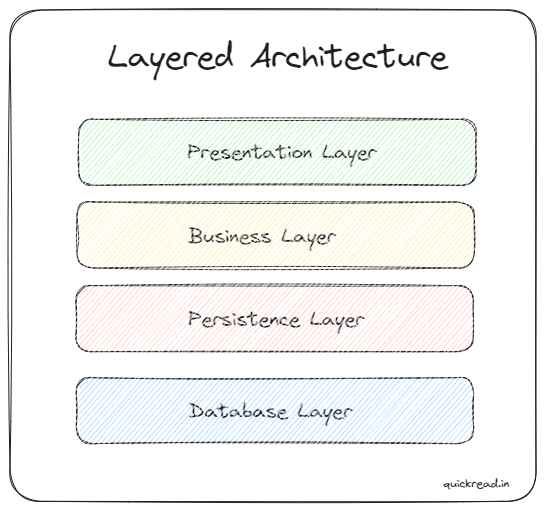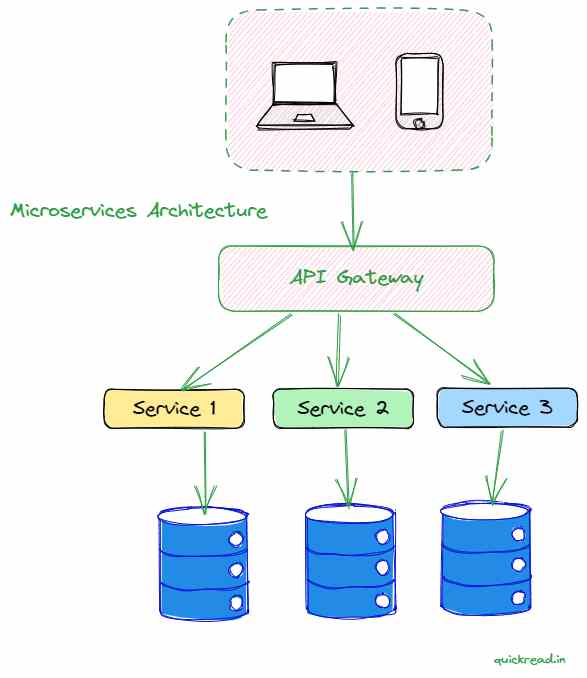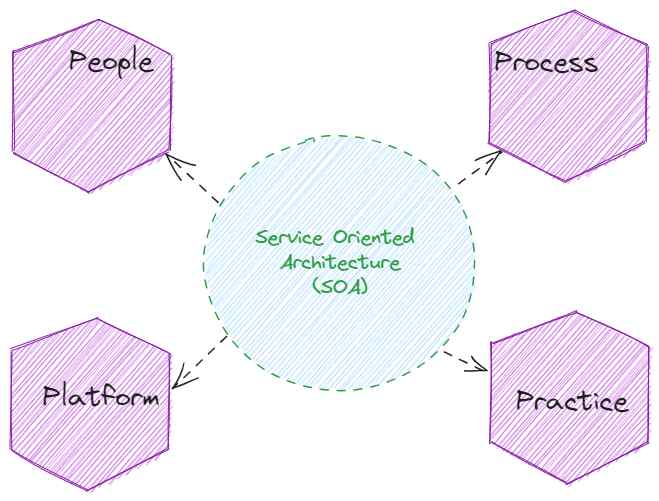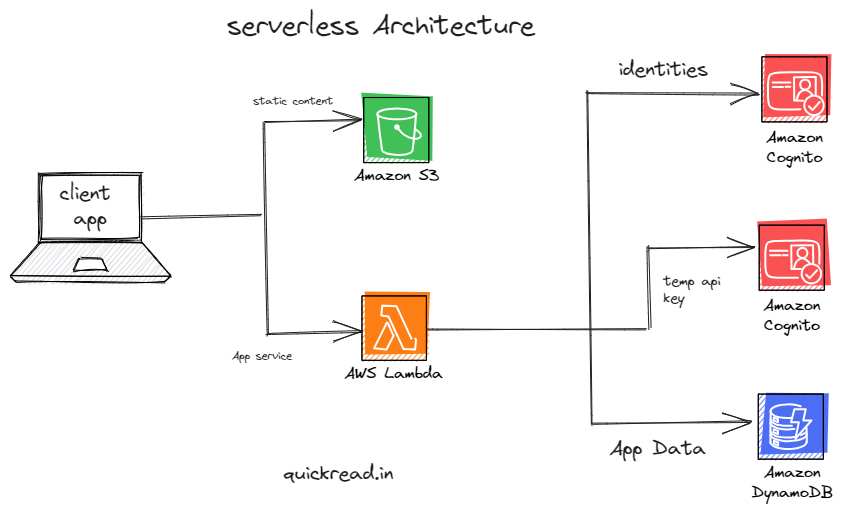Introduction
Architecture patterns provide proven high-level design blueprints for building robust and maintainable applications. Architecture patterns aim to achieve qualities like performance, scalability, resilience, flexibility, and more in a structured way. This article will provide an analytical overview of the top 5 architecture patterns frequently used in software development.
The patterns we will explore are:
- Layered Architecture
- Event-Driven Architecture
- Microservices
- Service-Oriented Architecture
- Serverless Architecture
Let’s start by looking at what architecture patterns are and their key benefits.
What Are Architecture Patterns?
In software engineering, architecture patterns are reusable templates that provide solutions for commonly occurring problems in designing an application’s architecture. They capture proven practices for organizing components and communication paths at a high level.
Some benefits of using architecture patterns:
- They incorporate best practices for efficiency, scalability, ease of change, testability etc.
- Promote structured and modular code
- Reduce overall complexity
- Decouple components for independent maintainability and deployability
- Help reason about domain-driven design
Overall, architecture patterns aim to create adaptable, long-lasting applications that can handle evolving requirements and tech stacks. Understanding common architecture patterns equips us to make sound technical decisions.
Top 5 Architecture Patterns
Layered Architecture Pattern
The layered architecture pattern structures apps into related layers, each with distinct responsibilities.

Some examples of commonly used layers:
- Presentation Layer – Renders UI and handles user interactions
- Business Layer – Core business logic and workflows
- Persistence Layer – Database access, file I/O, external services
- Domain Layer – Domain models and entities
- Infrastructure Layer – Technical underpinnings like messaging, caching, networking
The key goals achieved by layered architecture:
- Separation of concerns – Each layer has a singular focus
- Encapsulation – Only expose required details to other layers
- Reusability – Layers can be reused across different apps
- Change isolation – Changes localize to layers
- Testability – Layers can be tested independently
Overall, layered architecture promotes modularized code organized by role. Let’s look at an example next.
Layered Architecture Example
Here is example folder structure based on a layered architecture:
app/
- controllers/
- models/
- views/
- utils/
- services/
- authService.js
- notificationService.jsThe different folders represent distinct layers:
- Controllers – Application layer handling requests and input
- Models – Domain layer with business entities
- Views – Presentation layer rendering UI
- Services – Persistence layer for external services
- Utils – Technical utilities representing infrastructure
This creates a modular separation based on the layered architecture pattern.
Event-Driven Architecture
Event-driven architecture uses events to trigger and communicate between decoupled components. It promotes high scalability and resilience.

Some key characteristics of event-driven architecture:
- Components emit events on occurring actions
- Other components subscribe to events
- Events trigger associated handler logic to execute
- Components don’t directly call each other, only communicate via events
This loose coupling allows easier scaling and prevents cascading failures. Components can be deployed independently.
Benefits of Event-Driven Architecture
- High scalability since components are decoupled
- Resilience as errors are isolated
- Real-time processing as consumers react to events immediately
- Flexible integration by producing/consuming events
- Loose coupling – reduced dependencies between components
Event-Driven Architecture Example
Here is a simple example of event-driven architecture:
// Event handler
function emailAlert(event) {
// Send alert email
}
// Register handler
emitter.on('error', emailAlert);
// Emit event somewhere else in code
emitter.emit('error', {message: 'Server error occurred'});This shows how events and handlers enable decoupled logic execution. The components are unaware of each other – they only interact via events.
Microservices Architecture
Microservices architecture decomposes applications into small, modular, and independently deployable services. Each service focuses on a specific capability.

Some key characteristics of microservices:
- Highly maintainable and testable
- Loosely coupled – services are independent and interact via APIs
- Organized around business domains vs technology layers
- Owned by small teams
- Use lightweight protocols like HTTP/JSON
This approach enables continuous delivery and scaling of complex applications.
Pros of Microservices Architecture
- Independent development and deployment
- Fault isolation – failures are contained
- Granular scaling
- Aligns to organizational structure
- Technology flexibility – mix and match tech stacks
Microservices Example
Here is an example folder structure based on microservices architecture:
user-service/
- controllers/
- models/
- routes.js
payment-service/
- controllers/
- models/
- routes.jsThe user management and payments domains are separated into independent microservices. Each can be developed and deployed independently.
Service-Oriented Architecture (SOA)
Service-oriented architecture is centered around reusable services that expose APIs to be consumed and orchestrated.

Characteristics of SOA:
- Services expose callable APIs matching functional needs
- APIs abstract underlying implementation from consumers
- Services can be orchestrated together to build workflows
- Shared governance and contracts for consistency
- Services are independently maintained and scaled
SOA enables building large interconnected systems from modular services.
Benefits of Service-Oriented Architecture
- Reusability – services encapsulate reusable logic
- Loose coupling – reduced dependencies
- Flexibility – services can be consumed by diverse consumers
- Scalability – services scale independently
- Availability – services can be load balanced
SOA Example
Here is a simple example of service-oriented architecture:
// Inventory Service API
class InventoryAPI {
getInventory() {
// returns inventory
}
}
// Order Service
class OrderService {
placeOrder() {
let inventory = InventoryAPI.getInventory();
// Place order
}
}The OrderService orchestrates the InventoryService to place an order – showing service composition.
Serverless Architecture
Serverless architecture relies on backend-as-a-service (BaaS) and function-as-a-service (FaaS) rather than maintaining servers.

Some qualities of serverless architectures:
- Stateless functions that run on triggers
- Embed business logic into FaaS functions
- Leverage managed cloud services for concerns like databases, storage, messaging etc.
- Event-driven for coordination and workflows
- Scale seamlessly based on usage
This enables high scalability without server ops or resource provisioning.
Benefits of Serverless Architecture
- Auto-scaling based on usage levels
- Shift infrastructure management to vendors
- Usage-based costing – no idle capacity
- High availability and fault tolerance
- Faster time to market without server setup
Serverless Example
Here is a simple serverless function:
// FaaS function
export function processOrder(order) {
// Save to managed DB
// Publish event
// Send email
}The function handles an order using fully-managed services.
Wrap Up
This guide provided an analytical overview of some of the most widely used architecture patterns like layered, event-driven, microservices, SOA and serverless. Analyzing their strengths and weaknesses allows selecting an appropriate pattern based on application characteristics and constraints.
Architecture patterns provide a proven template for efficiency, scalability, maintainability and other critical factors. They solve common problems at a high level. Understanding core architecture patterns unlocks designing robust applications optimized for long-term agility and productivity.


